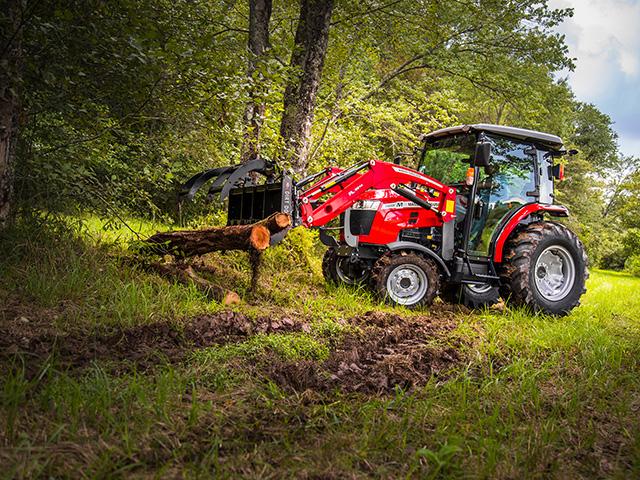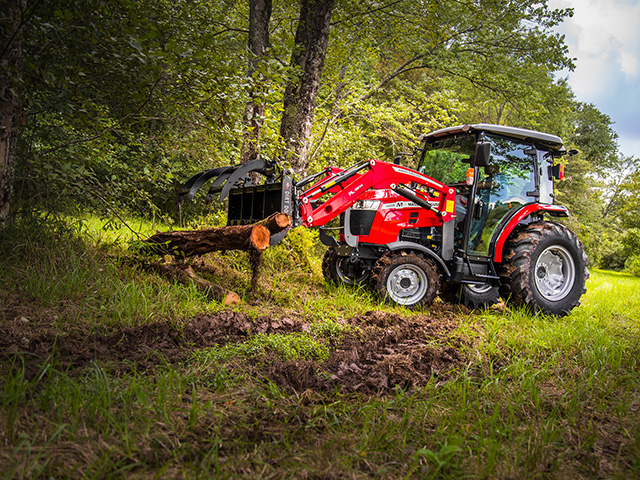MachineryLink
Machinery Sales Continue COVID-Year Climb
March looked bleak for machinery sales as COVID-19 took hold of work and home life in the United States. The Association of Equipment Manufacturers (AEM) reported that March 2020 farm tractor sales fell 15.6% compared to March 2019. Retail sales of self-propelled combines declined 11.9%. First quarter 2020 tractor sales, including all two-wheel and four-wheel drive tractors in all horsepower ranges declined 7.6% -- and that number would have been far worse with sales of compact and sub-compact tractors. Combine sales declined 18.1% in the first three months of 2020.
Major farm equipment manufacturers were not expecting 2020 to be a banner year. But they did not expect -- how could they? -- that a globe-circling viral pandemic would sweep aside even less than the stellar expectations for the $288 billion industry. Agricultural manufacturers faced a yawning unknown as COVID-19 appeared around the world. Factories closed. Supply chains became uncertain at best.
Thing is -- and time will tell -- March may have been the worst of it for the machinery industry. Manufacturers and auctions began to find their way through the landmines of COVID-19. Factories adapted to new health and social-distancing practice. They found ways to strengthen their supply chains.
And, machines continued to move out of factories to customers waiting to buy. There appeared to be an attitude among buyers that "this too shall pass," said Curt Blades, AEM Senior VP of Ag Service. Farming and ranching rolled on, even in the face of COVID-19, because it has to. Everyone has to eat.
"I'm pretty proud of the manufacturers," said Blades of their work in the early days of COVID. "They were quick to respond and they were innovative. It was go-time, there were tractors already in the field."
Net farm income is as good a predictor as any of machinery sales and that's likely driving tractor and combine sales. In its latest estimate, USDA forecast 2020 net farm income would climb more than 20% this year. Lower cash receipts from commodities, offset by large cash infusions from federal programs such as the disaster assistance, Coronavirus Food Assistance Program, Paycheck Protection Program and the Market Facilitation Program.
P[L1] D[0x0] M[300x250] OOP[F] ADUNIT[] T[]
The infusion appears to be having its predictable effect. AEM's September 2020 Tractor and Combine Report revealed that sales of tractors of all sizes and combines beat retail sales recorded for the same month in 2019. It is the first time this year that all tractor and combine categories outpaced sales in the same month 2019.
It is 40-to 100-horsepower and below-40-horsepower tractors, with sales nothing short of phenomenal all year, that are propelling retail sales upward. Through September this year, the industry has sold more than 154,000 less-than-40-horsepower tractors and nearly 50,000 40- to 100-horsepower units. For the year, 40-and-under-horsepower tractor sales are up 18% over the first nine months of 2019. Sales of 40- to 100-horsepower tractors are up 10.9%.
Why the small(ish)-tractor buying binge? A reasonable guess is that white collar, property-owning office workers, COVID-bound at home are discovering all sorts of projects needing the attention of new horsepower. More, landscapers also may be upgrading their equipment lines as they meet increased demand for their services from those same homebound landowners.
In much of the world, a 40-horsepower tractor is a pretty standard farm machine. Not in the U.S. It is a horsepower range generally not viewed as an agricultural tractor.
But even small units generate important sales.
"It's a volume that keeps the lights on," Blades explained. "It's been a solid market for the past couple of years."
Overall tractor sales continue to be driven by small tractors, but the industry is seeing improved commerce in larger horsepower and four-wheel drive tractors.
Retail sales of tractors 100-plus horsepower are up 7% in September, but off a slight 1.8% for the year. Four-wheel-drive unit sales were up 21.4% in September, but down 4.7% for the year.
Combine sales are doing well, up 8.2% in September (631 total units) and up 4.3% for the year (3,770 units sold). New combine technologies are likely behind the steady sales performance. John Deere, Fendt, New Holland, Case IH, and CLAAS have all put new combines onto the market in the past year, or so. They are being purchased by farmers wanting to upgrade their harvesting efficiencies and technologies.
"With all tractor and combine segments showing month-to-month growth in September, we're cautiously optimistic that this year may end up strong despite all of the head winds in the market," Blades said.
Dan Miller can be reached at dan.miller@dtn.com
Follow him on Twitter @DMillerPF
(c) Copyright 2020 DTN, LLC. All rights reserved.






Comments
To comment, please Log In or Join our Community .